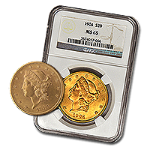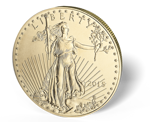- 888-696-4653
-
888-696-4653
Call Us
-
0
Cart
-
Open Account/Login
Open Account/Login
Here at ITM Trading we pride ourselves on customer service, as can be evidenced by our customer reviews. To take this service to the next level, we took some time to create this Guide to Owning Precious Metals to help you understand the precious metals markets. In this guide we will discuss the history of precious metals, reasons why people invest in them, why we feel now is a good time to buy them, how to buy gold and silver, storage options and how to sell gold and silver. As always, if you have any questions, call us at our offices and we will be glad to assist you.
History of Precious Metals as Money Gold and silver have long been held as a symbol of wealth and luxury due to their beauty and rarity. Gold more so than silver as can be seen in the old Egyptian relics made primarily of gold. Many believe that this is due to the fact that silver is less rare than gold, but none the less silver has always made beautiful jewelry, art and silverware for centuries. More importantly though is gold and silver’s use as money over the years.
Gold and silver are the oldest forms of money in the world. Some would say that they are the world’s only REAL money. Gold’s use as money can be traced back to 560 B.C.E. when King Croesus of Lydia created gold coinage with his likeness on the front. No paper money can claim to be as long standing as gold and silver. This is why many governments around the world cherished the gold standard for so many years.
The United States used gold as money from 1794 to 1933, and silver from 1794 to 1965, which many people seem to forget. Even after gold had stopped being used as coinage in 1933, the U.S. was still on a gold backed currency system until 1971, when Nixon closed the gold window and placed the country on a fiat currency system.
You may have heard the term “fiat currency” lately, as it has become a popular term that economists throw around. It means that the dollar is not backed by any store and value; in fact, its value is backed only by the full faith and credit of the United States Government. Since Nixon removed the U.S. from the gold standard 42 years ago, the dollar has lost over 80% of its purchasing power (value), and gold has risen from $35 per ounce to as high as $1,900 per ounce, a gain of over 5,300%!
To put it into perspective, in 1971, the average home in the U.S. cost $23,900 (source: census.gov), or 682 ounces of gold ($35/oz.). Today, the average home costs $212,300, or 132 ounces of gold ($1,600/oz.). It takes almost nine times the amount in dollars and only a third of the ounces of gold to buy the same house 41 years later. Said another way, if you would have put $23,900 of your money in a savings account in 1971, it would have bought a house in 1971, but would only buy around 10% of a house today. If instead you would have bought $23,900 worth of gold, it would be worth $1,092,571 today and could buy you four average homes. That is the power of inflation!
The chart below from sharelynx.com shows the purchasing power of the dollar vs. $1,000 worth of gold going back to 1900.
Reasons to Invest in Precious Metals The truth is, inflation is only one reason to own precious metals. Here is a more complete list of reasons why people generally invest in precious metals:
• Inflation (or fear of inflation)
• Loss of value in the U.S. Dollar
• Stock market turmoil
• Interest rate spikes
• Commodity shocks, especially oil
• Banking crises
• Debt crises and international debt defaults
• Geopolitical issues
Inflation (or Fear of Inflation) Precious metals are world renowned for their ability to hedge against inflation. In the 1970s, the U.S. witnessed double digit inflation. During that time, gold and silver hit new records not surpassed for over 27+ years. It is said that an ounce of gold today can buy the same amount of goods as it could 100 years ago.
Loss of Value in the U.S. Dollar Because precious metals are priced in U.S. dollars, when the value of the dollar decreases, there is a corresponding increase in the value of precious metals. Most of the time, the increase or decrease in value of gold on any given day is due to supply and demand rather than the loss of value in the dollar. If you are looking for a store of value, know that any loss in the dollar will be offset by an increase in the value of precious metals. This is a favorite reason for investing in precious metals amongst people who believe the dollar will collapse.
Stock Market Turmoil A well-diversified portfolio will contain many different types of assets in order to decrease risk. Gold and silver are great diversifiers to stocks. Typically, when stocks are doing poorly, people get fearful, and when people get fearful, they buy gold and silver. There have been times throughout history when gold and the Dow have risen and fallen together, but for the most part, they have a tendency to be negatively correlated, meaning they will move in opposite directions. For example, after the stock market crashed on Black Monday 1987, the DJIA saw a loss of over 20% in two months, while gold went up 10% during the same time period.
Interest Rate Spikes When interest rates rise, it creates price increases (inflation) in the cost of borrowing. This in turn makes cars, houses, and other possessions more expensive to own and in turn makes gold more sought after. People tend to believe that higher interest rates stop inflation in its tracks, but that is not always the case.
Commodity Shocks, Especially Oil There have been many studies in the correlation between gold and oil over the past 40 years. Although the price of oil and gold do not mirror each other exactly, they do tend to move up and down together. If oil prices rise, investors can generally expect a corresponding rise in gold and silver. The real reason is because the factors that influence gold and oil tend to be similar. If oil prices rise, it causes inflation in other consumer goods, and simultaneously stifles growth.
Banking Crises Banks are the cornerstone of all economies. When banks fail, economies suffer, and people become fearful. When banks fail, people look to stores of value like gold and silver to protect their assets. A great example is to look at what happened to gold when Bear Sterns and Lehman Brothers failed when gold rose from around $700/oz. to around $1,000/oz. in just four months (40%+ gain).
Debt Crises and International Debt Defaults When nations become insolvent, people lose faith in the system, and with all of the banks and countries in the world so interconnected, a minor hiccup can cause panic. That type of panic increases demand for precious metals. A great example is how gold and silver reached new highs in April of 2011, when the possibility of a Greek default was all over the news.
Geopolitical Issues Geopolitical issues create tensions and crisis around the world. They disrupt commerce and distort economic conditions. When Tunisia and Egypt went into turmoil in 2011, it created a fear that spread around the world, and deepened uprisings in other countries in the Middle East. This caused precious metals to rise.











